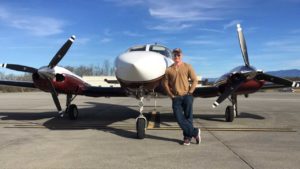 Madison Capital finances avionics equipment, including ADS-B Out solutions, and presents the following information as a service to customers.
Madison Capital finances avionics equipment, including ADS-B Out solutions, and presents the following information as a service to customers.
Starting January 1, 2020, all aircraft with electrical systems—and even some without—must be equipped with Automatic Dependent Surveillance-Broadcast Out (ADS-B Out) technology to fly in most controlled national airspace.
ADS-B is advanced air-traffic-management technology that allows equipped aircraft and ground vehicles to automatically share their identification, position, altitude and velocity with other aircraft and with Air Traffic Control. Ability to broadcast this information is known as ADS-B Out, and equipment that broadcasts is required to be installed in aircraft by January 1. Surveillance capability, known as ADS-B In, is not required.
According to the Federal Aviation Administration (FAA), ADS-B technology “improves safety and efficiency in the air and on runways, reduces costs, and lessens harmful effects on the environment.” Given that 5,000 aircraft occupy controlled U.S. airspace at any given time and that more than 26,000 flights are scheduled to fly in the space daily, it’s no surprise that real-time ADS-B is now used for air traffic control and is a top FAA priority.
Yet, the FAA announced that as of October 1, more than 20,000 U.S. aircraft subject to the ADS-B Out requirements were not yet equipped. Equipment has been installed in another 7,000 aircraft, according to FAA numbers, but those installations do not meet rule requirements.
Most importantly, the federal agency has said its January 1 deadline will not be extended. “The January 1, 2020 deadline will not move,” the agency states on its web site under Frequently Asked Questions. “The FAA encourages owners to equip as soon as possible to capture the benefits of ADS-B and to ensure they will be able to access all available airspace once the mandate becomes effective in 2020.”
The ADS-B Out rule does allow a mechanism for pilots/operators without ADS-B Out equipment installed to request air-traffic-control authorization to deviate from the rule to access ADS-B Out rule airspace. The FAA published a policy in 2019 with guidance on how controllers will handle these aircraft. But the policy is clear that unequipped aircraft “cannot expect uninterrupted access to ADS-B airspace.”
If you are still uncertain whether or not you are required to equip your aircraft with ADS-B Out, see the FAA’s decision flowchart at https://www.faa.gov/nextgen/equipadsb/research/do_i_need_to_equip/. Details and further specifics of the requirements can be found in Federal Regulations 14 CFR 91.225 and 14 CFR 91.227
Additional information on exemptions for and discussion on ADS-B can be found in a helpful article from Leading Edge Avionics, which can be accessed here-https://www.leavionics.com/blogs/articles/faa-sends-a-message-about-non-compliant-aircraft.
With less than three months remaining before compliance is mandatory, however, the FAA has made one thing clear: Anyone operating a non-equipped aircraft in ADS-B Out airspace without first having a pre-flight authorization that meets the latest rules will be presumed to have violated the regulations.




